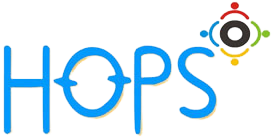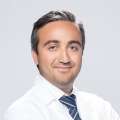Hemimegalencephaly
Find your care
Call 310-825-5111 to learn more about our world-class pediatric neurosurgery services.
Special Consideration: Epilepsy Surgery for Hemimegalencephaly
In this section: Tuberous Sclerosis Complex | Focal Cortical Dysplasia | Hemimegalencephaly | Rasmussen’s Encephalitis | Sturge-Weber Syndrome
The UCLA Hemimegalencephaly Program
Hemimegalencephaly is a rare genetic condition that causes part of the brain to be abnormally larger than the rest. It is associated with seizures and sometimes developmental delay. These seizures usually do not respond well to medications. A surgery called a hemispherectomy is often required to control the seizures. In most cases, a functional hemispherectomy can be performed to fully disconnect the affected hemisphere while leaving most of the disconnected brain within the skull. Other times, an anatomic hemispherectomy may be required. This operation involves physically removing the entire affected hemisphere. Hemispherectomy operations are highly intricate and complex. They can only be safely performed in a handful of centers across the country. We take great pride at UCLA being a national and international referral center for surgical treatment of hemimegalencephaly. The UCLA Hemimegalencephaly Program offers comprehensive care to children with hemimegalencephaly. Our team consists of experts from neurosurgery, pediatric epilepsy, genetics, behavior/developmental pediatrics, orthopedics, ophthalmology, and endocrinology.
Neurosurgery

Dr. Aria Fallah, our pediatric neurosurgeon, leads a global hemispherectomy study called ‘HOPS’. This study is developing and validating a tool that would predict how successful a hemispherectomy would be in curing seizures in children with hemimegalencephaly and other seizure disorders. Through careful data collection, global collaboration, and expert biostatistical analyses, we can significantly advance our treatments for these rare neurological conditions.
Pediatric Epilepsy/Neurology
Our pediatric epilepsy expert will provide a comprehensive evaluation and medical management. Typically, an initial consultation includes various tests, including inpatient video-EEG, brain MRI, and FDG-PET scan. These tests help to identify where in the brain the seizures are coming from and which treatment options are best. Surgery can often successfully manage seizures in children with hemimegalencephaly. Most patients require antiseizure medications before and after surgery. Disease-specific medication might be considered depending on the cause (such as genetic mutation) of hemimegalencephaly.
Although seizure control is a primary goal of treatment, our pediatric neurologist will work closely with experts in various fields to address other symptoms that can be associated with hemimegalencephaly. These symptoms may include behavioral and learning issues, vision issues, and hormone-related issues (like early puberty or weight gain). Our experts in behavior/developmental pediatrics, ophthalmology, and endocrinology will help to treat these symptoms. After surgery, children may also develop movement issues like cerebral palsy, which can be supported by our orthopedic experts.
Genetics
Genetic testing can be important for your child’s seizure care. Genetic test results may provide information about what to expect in the future, what seizure treatments may work best, and the chance that other relatives have seizures. About 30% of the time, genetic testing can find a genetic cause for an individual’s seizures. But many children with seizures due to hemimegalencephaly or focal cortical dysplasia go without a genetic diagnosis when testing is done on blood, skin, or saliva. This is because the genetic mutation is often not found in these sample types but instead found only in affected brain tissue. This phenomenon of having a mutation only in some parts of the body is called mosaicism. Mosaic mutations are typically not inherited. Mosaic mutations occur after conception but during the early fetal development of the brain.
Brain tissue is not an easy sample to attain, but through the Hemimegalencephaly Program at UCLA, there is a unique and critical opportunity to test brain tissue for mutations that could be the explanation for your child’s seizures. With the help of our dedicated and experienced team of geneticists and genetic counselors, we are able to identify a genetic mutation in brain tissue in around 50% of individuals. Many of these mutations are in genes involved in the mTOR pathway, for which there are rapidly growing therapeutic options.
Our surgical and neurological teams work closely with genetics because we recognize the essential role that genetics plays in improving care. Our aim is to give you a cutting-edge, seamless, and multidisciplinary approach to your entire family’s care.
Expert Providers
Children who continue to have seizures despite medical therapy may be candidates for curative epilepsy surgery
Curative Epilepsy Surgery (PDF)






